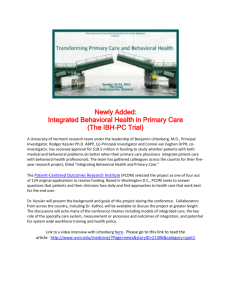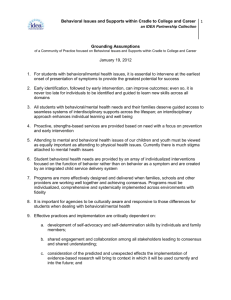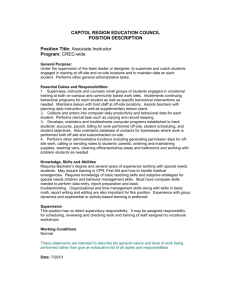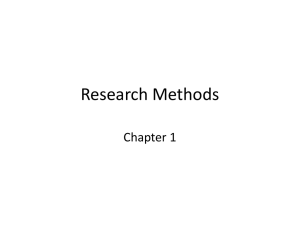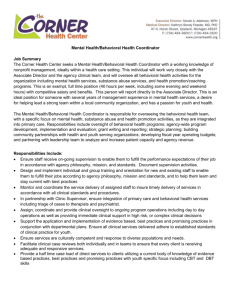Inclusive Employment
advertisement
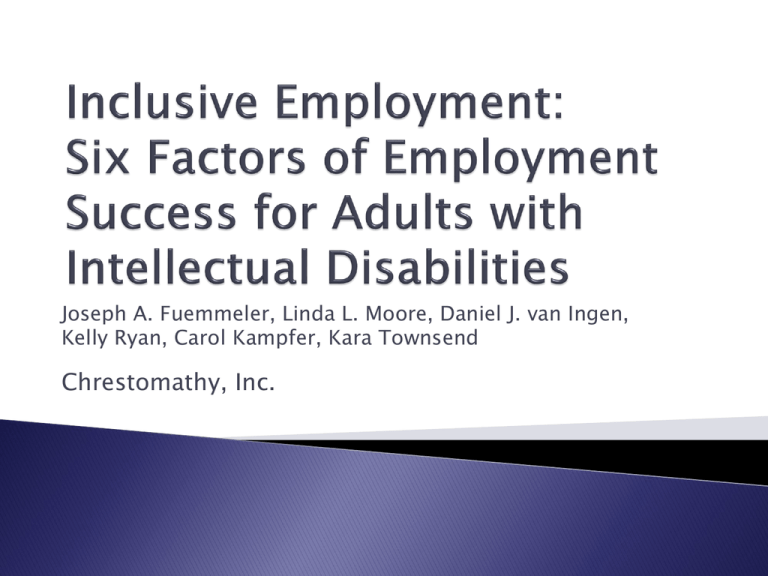
Joseph A. Fuemmeler, Linda L. Moore, Daniel J. van Ingen, Kelly Ryan, Carol Kampfer, Kara Townsend Chrestomathy, Inc. Research on Job Perspectives of Adults with ID Adults with ID frequently feel that jobs are being “chosen for them” (Bass & Drewett, 1997). Adults with ID often complain that jobs lack sufficient stimulation (Walker, 2000). Adults with ID feel they are not being challenged (Wistow & Schneider, 2003). Research on Inclusion for Adults with ID ◦ Workers with intellectual disabilities felt lonely and excluded when inclusion in community life was low (Petrovsky & Gleeson, 1997). ◦ Paid employment improves the quality of life for individuals with an intellectual disability (Eggleton, Robertson, Ryan, & Kober,1999). Methods ◦ Case study—review of Chrestomathy, Inc. clients Over 25 years as a day program in Minneapolis Clients “on the edge of inclusion” ◦ Selection of the Six Factors Factors identified from examination of job placements Factors that were outside of Client or Provider influence were eliminated. ◦ Development of the Supported Employment Survey Review of assessment process Consolidation of relevant items into single form “Chrestos” meaning “useful”and “mathein” meaning “to learn” Day program provider serving Adults with IDD Services help the whole person Vocational Educational Therapeutic Most clients are “on the edge of inclusion” Progress is not a straight line to the top. Success is rarely static, often cyclical. Improvement Relapse “Bouncing back” The goal is to reduce long term effects of relapse and bounce back to greater achievement. Vocational Skills training Opportunities for pay both onsite and offsite Educational Communication Community Integration Therapeutic Anger Management and Social Skills Group Behavioral Supports and Interventions Physical Exercise/ Sensory Integration Long-term focus—“no demit” policy for clients with complex needs Dual diagnosis, Autism, Behavioral needs Over 50% demitted from other programs for behavioral problems. Almost 30% came directly from school programs due to need for enhanced supports. Chrestomathy provides specialized supports High staff to client ratio Individualized Behavior Support Programs Transportation to and from job sites as well as residence The Six Factors ◦ ◦ ◦ ◦ ◦ ◦ Behavioral Stability Match of Skills and Job Duties Following a Long Term Plan Independence in a Job Setting Unique Services or Strengths that Add Value Supportive Relationships Each of the six factors has two sides ◦ Client makes choices about how to use their talents ◦ Provider plans for support of the client Client is responsible for behavioral choices, learning to make better choices through behavior program plans Client Provider creates program structure for learning through consequences Provider Client works on skill sets through vocational training Client Provider finds ways to match the skills and job duties Provider Client learns more about being a part of the workforce through exposure to different types of paid activities and career counseling to understand what types of work are suitable. Client Provider assesses long-term interests and potential for stability and outlines short term outcomes that support the long term goal Provider Client learns how to meet the standards through practice, using individualized supports and assessment of the quality of own work Client Provider trains Job Coaches to bridge the gap between client’s current ability and the immediate needs of the job by providing communication and feedback on quality of work Provider Client contributes to the workforce through filling non-traditional employer needs Client Provider uses available resources to provide employers with incentives to hire (job coaches, support system, transportation) Provider Client adopts positive attitudes (optimism and perseverance) by looking to role models and encouragers in his or her work and social environments Client Provider helps client to re-frame negative thinking to find the positives in daily work situations and encourage effort and development of skills Provider Instrument based on aspects of 6 factors ◦ A useful tool in discussions with other people who support the individual about planning for employment success ◦ Offers an “at a glance” picture of readiness, and a final score that can be used to identify those who are most ready See Handout Questions? Contact info: joe@chrestomathyinc.org Chrestomathy Website: www.chrestomathyinc.org




